Best Haskell Programming Books to Buy in December 2025

Learn Physics with Functional Programming: A Hands-on Guide to Exploring Physics with Haskell


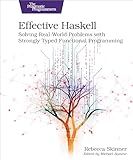
Effective Haskell: Solving Real-World Problems with Strongly Typed Functional Programming


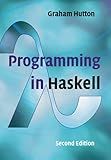
Programming in Haskell



Learn You a Haskell for Great Good!: A Beginner's Guide
- AFFORDABLE QUALITY: ENJOY SAVINGS WITH GENTLY USED BOOKS!
- ECO-FRIENDLY CHOICE: SUPPORT SUSTAINABILITY BY BUYING REUSED BOOKS.
- FAST DELIVERY: GET YOUR BOOKS QUICKLY AND START READING SOONER!


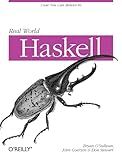
Real World Haskell
- QUALITY ASSURED: GENTLY USED BOOKS, READY FOR NEW ADVENTURES!
- ECO-FRIENDLY CHOICE: SUPPORT SUSTAINABILITY WITH PRE-LOVED READS.
- AFFORDABLE PRICES: QUALITY LITERATURE WITHOUT BREAKING THE BANK!



Get Programming with Haskell


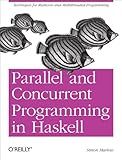
Parallel and Concurrent Programming in Haskell: Techniques for Multicore and Multithreaded Programming


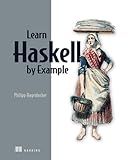
Learn Haskell by Example (Bookcamp)



Thinking Functionally with Haskell



Haskell in Depth


The => sign in Haskell is used to declare type constraints. It is typically seen in type signatures, which are used to specify the types of a function's inputs and outputs. The => sign separates the type constraints from the actual type.
For example, suppose you have a function that takes two arguments of some type a and returns a value of type b. You can use the => sign to specify constraints on the type a.
Here is an example type signature:
myFunction :: Ord a => a -> a -> Bool
In this case, Ord a is the type constraint, denoting that the type a must be an instance of the Ord typeclass, which means it must support comparison operations such as <, <=, >, and >=. The type signature specifies that myFunction takes two arguments of type a and returns a Bool.
So, the => sign helps to add constraints on the types involved in a function signature, ensuring that the function only operates on types that satisfy those constraints.
What does the => symbol mean in Haskell's Numeric hierarchy type classes?
In Haskell's Numeric hierarchy type classes, the => symbol is used to separate class constraints from the type signature. It is also known as the "class constraint arrow" or "fat arrow".
For example, consider the following function signature:
foo :: (Num a, Eq a) => a -> a -> Bool
Here, the Num a, Eq a are the class constraints, indicating that the function foo works on types a that are both instances of the Num and Eq classes. The => symbol separates these constraints from the actual type signature (a -> a -> Bool), which specifies the input and return types of the function.
In this case, the function foo takes two arguments of type a, performs arithmetic operations on them, and returns a boolean value, indicating whether the two arguments are equal.
By using class constraints, Haskell allows you to write more general functions that can work with different types, as long as those types satisfy the required class constraints.
What does the => symbol represent in function compositions in Haskell?
The => symbol in Haskell represents a type constraint or a "type class constraint". It is used in the type signature of a function to specify that a type variable must satisfy certain constraints in order for the function to be applicable.
For example, consider the following function signature:
myFunction :: (Num a) => a -> a -> a
In this case, the => symbol separates the type constraint (Num a) from the actual type signature a -> a -> a. The constraint (Num a) means that the type a must be an instance of the Num type class, which represents numeric types that support arithmetic operations.
So, myFunction is a function that takes two arguments of type a and returns a value of type a, but the type a must be an instance of the Num type class.
This allows you to use arithmetic operations such as addition or multiplication within the function body, as the type constraint ensures that the arguments and return value will have the necessary operations defined.
Note that the => symbol is not related to function composition in Haskell. Function composition is typically represented using the . operator, as in f . g, where f and g are functions.
What is the significance of the => constraint in Haskell's Monad type class?
In Haskell, the => symbol is used to express constraints in type signatures. In the context of the Monad type class, => is used to declare the additional constraints imposed on the "wrapper" type in order for it to be deemed a monad.
The Monad type class is defined as class Monad m where. But often, instances of the Monad type class may have additional constraints, such as requiring the "wrapped" types to be an instance of other type classes, like Eq or Show. These additional constraints are expressed using =>.
For example, consider the Maybe monad, which represents computations that can either have a result or nothing. A valid Maybe monad instance requires the wrapped type to be an instance of the Eq type class, so we write it as instance Eq a => Monad Maybe where .... Here, Eq a => is the constraint imposed on the type a that is being wrapped by the Maybe monad.
The => constraint allows us to define more specific and detailed requirements for the types that can be made into monads, enabling more precise control and customization over the behavior of the monad instance.
